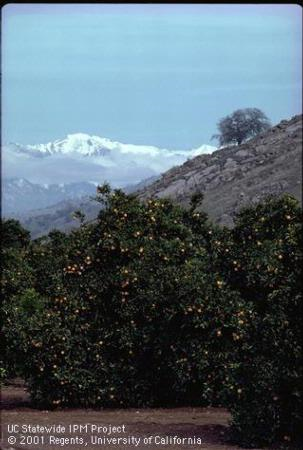UCR wages $11+ million war against citrus greening disease
Three projects win funding to fight tree-killing bacteria
With three new grants totaling more than $11 million, UC Riverside is helping lead the fight against citrus greening or Huanglongbing, a disease threatening citrus industries in the U.S. and worldwide.
The disease is from bacteria transmitted to citrus trees by a tiny flying insect, the Asian citrus psyllid. Infected trees produce no fruit, or fruit that is bitter, small and worthless. Despite intensive research for the past 15 years, there is no known cure for it. It has reduced citrus production in Florida by more than 75%, and it has already been detected in Texas and California.
Because California supplies the country with 80% of its fresh citrus, and because 267,000 acres of Golden State lemons, oranges, grapefruits, and mandarins are at stake if operations are permanently lost, the USDA National Institute of Food and Agriculture is making an emergency investment in citrus disease research with three projects at UCR.
These projects focus on instilling tolerance to the disease with three different approaches: below ground, in the rootstocks, above ground in the shoots and branches, and systemically, with a peptide that would move throughout the tree.
The largest of the projects, at $6.8 million, is being led by Danelle Seymour, assistant professor of genetics in the Botany and Plant Sciences Department at UCR. Their focus is on breeding Huanglongbing or HLB-resistant rootstocks, and the project depends on collaboration with Kim Bowman, a citrus breeder at the USDA Agricultural Research Service in Ft. Pierce, Florida.
“In Florida, nearly every single tree is infected. It's terrible for growers, but wonderful for breeding,” Seymour said. “We can't do this research at large scale in California because the disease isn't as widespread here.”
The classic way to improve resistance or encourage new qualities in crops is through genetics, making crosses between one plant that has a favorable trait, and one that doesn't. “We hope the result is better than the parents,” Seymour said. “When you work in wheat or tomato, you can do these crosses and perform evaluations every year. In citrus, it takes 10 - 15 years to evaluate a new generation of trees.”
Because of the long lag time, the research-ready trees in Florida represent an opportunity for Seymour's team to begin examining new crosses now. The breeder, Kim Bowman, has evaluated over 10,000 trees and unique hybrids, from which a handful will be selected for release to growers.
In addition to evaluating these select few new hybrids for their HLB tolerance, the researchers will be watching the Florida-grown trees' responses to the different environmental conditions in California. “Can they perform well in response to different salinity levels in the soil, different humidity, as well as other pests and pathogens that we have here? We'll find out,” Seymour said.
Chandrika Ramadugu, a project scientist also in UCR's Department of Botany and Plant Sciences, is leading a project to develop HLB-resistant scion varieties that can be grafted to rootstocks. A scion is an above-ground portion of a plant, such as a bud or shoot, that can be used for grafting.
For trees, grafting can be equated to an organ transplant. The scion from one tree is attached to the trunk or rootstock of another with the hope of creating a new plant with combined attributes.
With its grant of $3.28 million, this project will analyze second-generation hybrids that are bred for ten years using Australian lime as a source of disease resistance.
Ramadugu will evaluate 24 novel hybrids in California, Florida, and Texas to assess resistance to HLB. Ideally, in addition to having enhanced disease tolerance, the new plants will also be able to produce good-tasting fruit.
There is little genetic diversity in cultivated citrus. When new pathogens arrive, the genetic uniformity can result in disease epidemics and dire consequences for the crop. In addition to the potential benefits of this project for the fight against HLB, the new hybrids may also help protect citrus from other pests and pathogens.
A third project, granted $1.36 million, will utilize a peptide found in Australian finger limes that is known to impart HLB resistance. Led by Hailing Jin, Microbiology & Plant Pathology professor, the project is developing ways to infuse trees with the peptide.
“The antimicrobial peptide in the finger limes are more efficient at killing bacteria as compared to antibiotics currently used in the field, and much more stable at high temperatures,” Jin said.
Because spray applications are expensive, Jin's project aims to spread the peptide throughout the trees' insides. In collaboration with University of Florida professor Svetlana Folimonova, Jin's team utilizes a natural citrus virus with almost no symptoms to deliver the peptide into the trees.
“You infect the tree with the virus, and it will spread in areas where the bacteria reside,” Jin said. “It would move systemically through the tree, and it would be very cost efficient for growers. No need to buy more insecticides.”
These grants were enabled by the 2018 Agricultural Improvement Act, which authorized the Emergency Citrus Disease Research and Development Trust Fund to fight HLB. With these and other projects, the USDA is bringing together the nation's top scientists to find scientifically sound solutions to the problem in a financially and ecologically sustainable way.
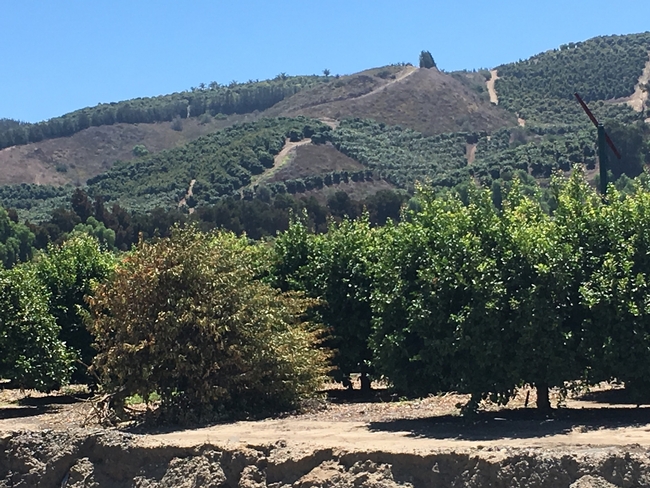
The best way to delay arrival of HLB in our area and minimize its impact is to keep ACP suppressed down to the lowest level possible. By treating in coordination with neighbors in an areawide approach, grower ACP treatments can have a greater impact on ACP populations than treating independently and out of sync with neighbors. Best Management Practices, such as making sure all equipment arriving and leaving your grove is free of citrus stems and leaves, can also greatly reduce the risk of HLB-positive psyllids entering your grove.
CITRUS REMOVAL PROGRAM: Citrus trees that are neglected or abandoned may harbor ACP and HLB, increasing risk to other citrus in the area. Abandoned and neglected trees may be reported to Cressida Silvers at 805-284-3310, or the county Ag Commissioner's office. The Citrus Matters ACT NOW program may be able to assist in citrus removal. For more information contact Joel Reyes at jreyes@cacitrusmutual.com or (559) 592-3790.
Asian Citrus Psyllid / ACP
There have been no ACP detections in San Luis Obispo County since our last update.
Huanglongbing / HLB
The most recent map and totals for HLB detections are posted at the website https://citrusinsider.org/maps/. As of November 16, the total number of trees that have tested positive for the HLB bacterium is 948, still all in LA, Orange, and Riverside Counties. All HLB detections have been on residential properties and the infected trees have been or are being removed. No HLB has been found in commercial groves to date.
Clarification on Field Cleaning Requirements for Movement of Bulk Citrus
To clarify the approved mitigation measures for bulk citrus fruit movement, the California Department of Food and Agriculture (CDFA) has updated the Asian Citrus Psyllid (ACP)-Free Declaration form. The current options that allow growers to meet the ACP-free standard when shipping fruit to a different ACP regional quarantine zone are the “spray and harvest,” “field cleaning with machine” and “wet wash” methods. Field cleaning must be done by machine, not by hand.
To read the full article, click here: https://citrusinsider.org/2018/11/clarification-on-field-cleaning-requirements-for-movement-of-bulk-citrus/
Upcoming CPDPC Meetings
Additional Resources
And Now it's in Marin County
SACRAMENTO — Marin County has been placed under quarantine for the Asian citrus psyllid (ACP) following the detection of one ACP in the City of Novato. The entire county is included in the quarantine zone.
The ACP is an invasive species of concern because it can carry the disease huanglongbing (HLB), also known as citrus greening. All citrus and closely related species, such as curry leaf trees, are susceptible hosts for both the insect and disease. There is no cure once the tree becomes infected. A diseased tree will decline in health and produce bitter, misshaped fruit until it dies. In California, HLB has been detected at residential properties in Los Angeles, Orange and Riverside counties. This plant disease does not affect human health.
Residents with backyard citrus trees in the quarantine area are asked not to transport or send citrus fruit or leaves, potted citrus trees, or curry leaves from the quarantine area. For commercial citrus, the quarantine prohibits the movement of citrus and curry leaf tree nursery stock, including all plant parts except fruit, out of the quarantine area. The quarantine also requires that all commercial citrus fruit be cleaned of leaves and stems prior to moving out of the quarantine area. An exception may be made for nursery stock and budwood grown in USDA-approved structures that are designed to keep ACP and other insects out.
ACP quarantines are in place in Alameda, Contra Costa, Fresno, Kern, Kings, Madera, Merced, Monterey, Placer, San Benito, San Joaquin, San Luis Obispo, San Mateo, Santa Clara, Solano, Stanislaus, Tulare, Yolo, Imperial, Los Angeles, Orange, Riverside, San Bernardino, San Diego, Santa Barbara, and Ventura counties, as well as Marin.
Residents in the area who think they may have seen ACP or symptoms of HLB on their trees are urged to call CDFA's Pest Hotline at 1-800-491-1899 or a local agricultural commissioner's office For more information on the ACP and HLB, please visit: www.cdfa.ca.gov/go/acp. Residents are also asked to follow these steps:
–California Department of Food and Agriculture
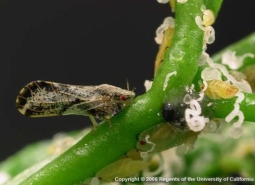
The Citrus Research and Development Foundation (CRDF), a $124 million state citrus-industry initiative, has invested nearly 90 percent of its funds in HLB research. CRDF asked the Academies to review its research portfolio and determine if its efforts have followed recommendations outlined in the Academies' 2010 report, which originally called for the organization's creation. The committee found that CRDF was responsive to several recommendations from the previous report, and along with other funders, has advanced our knowledge about the disease. However, HLB remains a serious danger to Florida's citrus industry, having progressed from an acute to a chronic disease throughout the state.
The report notes that significant barriers to progress toward an HLB solution still exist, among them the inability to culture the bacteria in the laboratory, the lack of advanced diagnostics for early disease detection, and the absence of standardized research methodology that would improve the comparability of results across studies. Resolution of any one of these issues would constitute a significant step, according to the report.
The committee recommended continuing support for both basic and applied research for short- and long-term research efforts. In the long run, HLB solutions would likely utilize new technology, such as gene modification and gene editing, focusing on targets that mediate molecular interactions among plant, bacteria, and the vector, the committee said. As interest in using genetic modification in research grows, CRDF should also consider funding research to assess stakeholder acceptance of the technology and expand efforts to educate growers, processors, and consumers to facilitate the eventual deployment of genetically modified citrus lines.
In the meantime, growers in the state will need short-term solutions for the industry to remain viable. The report recommends finding the best suite of strategies to control the disease in different environmental and growing conditions, vector and pathogen pressures, tree varieties, and stages of tree health, which would help growers in Florida and other states where HLB also occurs.
The report also highlights the need to better understand the economic and sociological factors that impact decision-making and behaviors of growers, which influence the adoption of HLB management strategies. CRDF should create accessible databases to support sociological and economic modeling of citrus greening-related research outcomes and application projections.
The report recommends researchers communicate about the outcomes and evaluation of their efforts in a timely and systematic way. Additionally, current approaches to research prioritization and funding based within individual federal and state funding agencies have not led to development of a master plan for HLB research and subsequent management solutions. CRDF should work with other funding agencies to create an overarching advisory panel to develop a master plan for HLB research, communication, and management.
The study was sponsored by CRDF. The National Academies of Sciences, Engineering, and Medicine are private, nonprofit institutions that provide independent, objective analysis and advice to the nation to solve complex problems and inform public policy decisions related to science, technology, and medicine. The National Academies operate under an 1863 congressional charter to the National Academy of Sciences, signed by President Lincoln. For more information, visit http://national-academies.org. A roster follows.
To download full report: https://www.nap.edu/read/25026/chapter/1
Contacts:
Riya V. Anandwala, Media Relations Officer
Andrew Robinson, Media Relations Assistant
Office of News and Public Information
202-334-2138; e-mail news@nas.edu
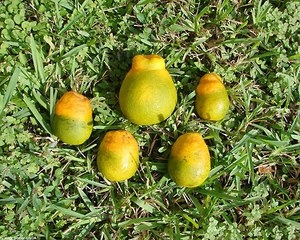
Two more trees infected with huanglongbing (HLB) disease were identified and destroyed in the days before UC Cooperative Extension and the Citrus Research Board kicked off their spring Citrus Growers Education Seminar in Exeter June 27. The new infections raise the total number of HLB-infected trees in Los Angeles and Orange counties to 73.
The latest statistic set the stage for spirited discussions about a looming threat that cut Florida citrus production by 60 percent in 15 years. The devastating citrus losses in Florida were recounted by Ed Stover, a plant breeder with USDA Agricultural Research Service in Fort Pierce.
"One of the benefits of coming here is I am reminded how beautiful citrus is," Stover said. "In Florida, there are more than 130,000 acres of abandoned groves." He showed slides of trees with thin canopies, pale leaves and green fruit; in one image the trees were skeletons among tall weeds.
Huanglongbing disease is an incurable condition spread by Asian citrus psyllid (ACP). The psyllid, native of Pakistan, Afghanistan and other Asian regions, was first detected in California in 2008. Everywhere ACP is found, the pests find and spread HLB.
Stover and his colleagues are searching for citrus cultivars that have natural tolerance for the bacteria that causes HLB, but progress is slow. Transgenic citrus, he said, is the best bet for developing citrus with HLB immunity.
"In my opinion, commercial genetically engineered citrus is inevitable, and GE crop concerns will likely decline with time," he said.
In California, the aggressive push to keep psyllid populations low, regulations to limit the spread of psyllids when trucking the fruit, and active scouting for and removal of HLB infected trees in residential areas could buy time for researchers to find a solution before California suffers the fate of Florida citrus growers.
"Be vigilant," Stover said. "As long as you are still making a good return, there is almost no investment too great if it keeps HLB out of California."
Beth Grafton-Cardwell, UCCE citrus entomology specialist and director of the UC Lindcove Research and Extension Center near Exeter, said the prime research in the San Joaquin Valley is aimed at early detection techniques.
Once a tree is infected, it takes nine months to two years for the bacteria to spread throughout the tree, so that when leaves are selected for testing, they detect the bacteria. Capturing and testing psyllids is one way to to find the disease early. Other early detection techniques focus on the microbes, proteins and aromas produced by sick trees.
"These can be measured with leaf test, a VOC (volatile organic compound) sniffer, swab or even dogs," Grafton-Cardwell said. "Scientists are studying every conceivable way to stop the disease."
In the meantime, growers were encouraged to carefully monitor for and treat psyllid populations in their orchards with pesticides. Pesticide treatment recommendations are available on Grafton-Cardwell's Asian Citrus Psyllid Distribution and Management website, http://ucanr.edu/acp.
"We have lots of challenges," Grafton-Cardwell conceded. "We hate disrupting our beautiful integrated pest management program. But monitor your own groves, apply the most effective treatments and remove suspected (infected) trees. Going through the pain up front will save us in the long run."
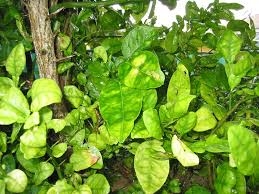
Funding of the Citrus Research Board is an investment in pertinent research that supports the industry, making the information accessible to all within the industry from pest control advisors to packing houses to farm managers and others within the industry. The goal is to get the research done and then make sure it is used. CRB represents both large and small growers throughout California.
CRB research programs are funded by grower assessments which attract both federal and state funding, funding which represents a third of the total budget. This funding is used to support such projects as, HLB-resistant citrus rootstocks; the development of effective, low-cost HLB early detection technologies to rapidly remove infected trees; improved biocontrol methods for specific insect control like Asian citrus psyllid, as well as others; pre-and post-harvest citrus research to maintain export markets, amongst many other research programs.
The Citrus Research Board also supports the Citrus Clonal Protection Program (CCPP) with the goal of insuring the safe introduction of citrus varieties, disease diagnosis and pathogen elimination of introduced varieties and the maintenance and distribution of introduced varieties. CCPP serves as the primary source of clean, disease-free budwood and new varieties from Florida. This work is a collaboration between the Citrus Nursery Board, the University of California and State and Federal Regulatory agencies. The CCCP has become a major hub of the National Clean Plant Network for Citrus, resulting in the collaboration with 10 citrus centers in nine states and territories with multimillion dollar funding in support of CCCP's operations.
CRB research supports the California Citrus Quality Council (CCQC) with the primary objective of ensuring that California citrus meets domestic and international phytosanitary, food safety, food additive and pesticide residue regulations. CCQC ensures that California citrus growers have access to export markets for their fresh citrus fruit. Exports represent a third of the California citrus grower profits.
CRB-funded research into the California citrus-breeding program has led to the development of the Tango mandarin, along with others. The core breeding program conducts yield trials throughout the state on all varietal types to give growers information on upcoming new varieties and rootstocks. There is ongoing work to incorporate molecular tools to expedite breeding efforts to find plant materials resistant to HLB.
Along with CRB funding for cutting-edge projects for pest and disease control strategies, the CRB-funded CORE IPM Program led by Beth Grafton-Cardwell has responded to citrus grower needs for modifying existing spray schedule to treat Asian citrus psyllid. The program evaluates rotational sprays at appropriate times to avoid pesticide resistance to ACP.
Finally, this CRB-packaged information has been extended to growers through programs, including: The California Citrus Conference, Post-Harvest Conference and Seminar, and Regional Grower Education Seminars. CRB-funded research is compiled in Citrograph Magazine, the only magazine dedicated solely to the California citrus industry.
